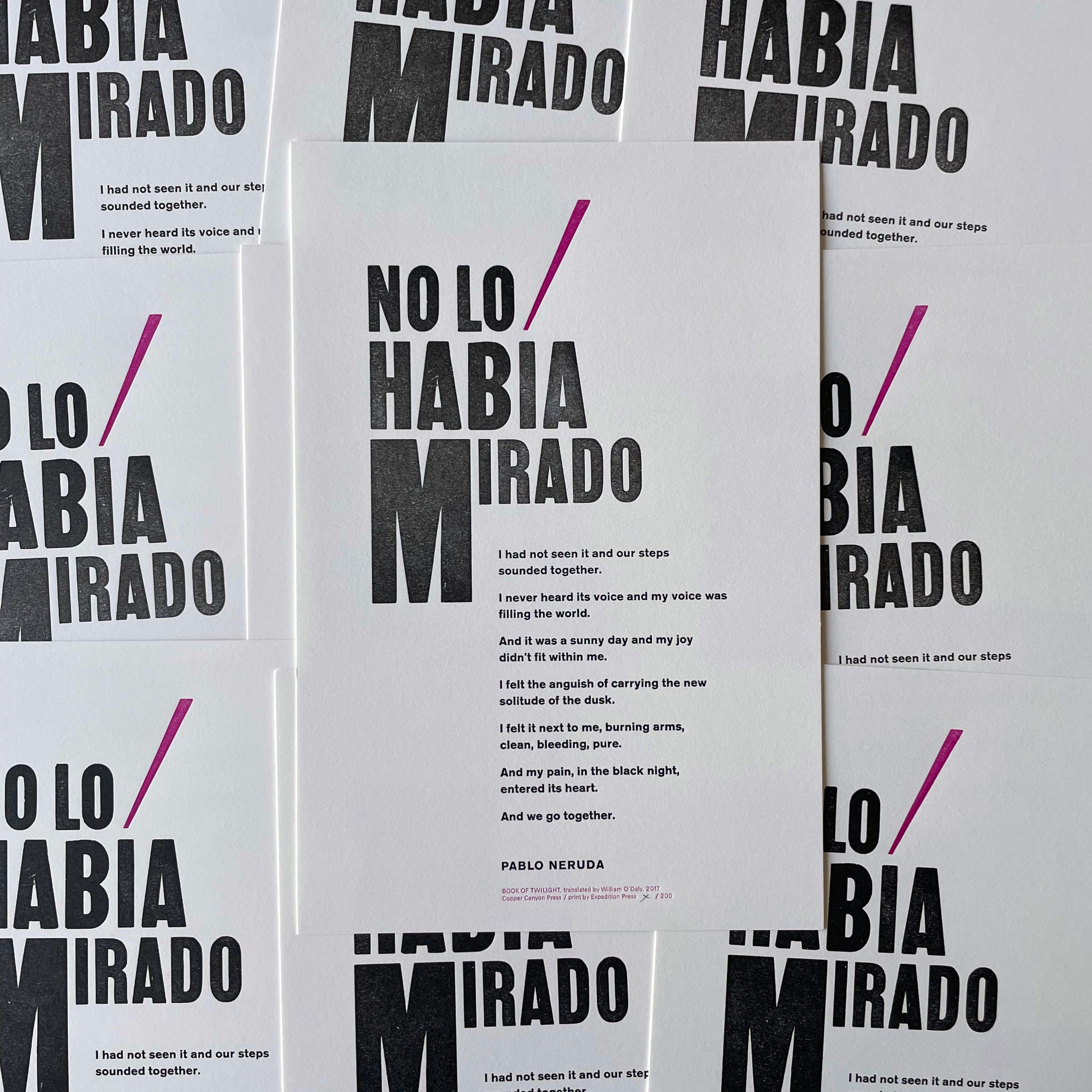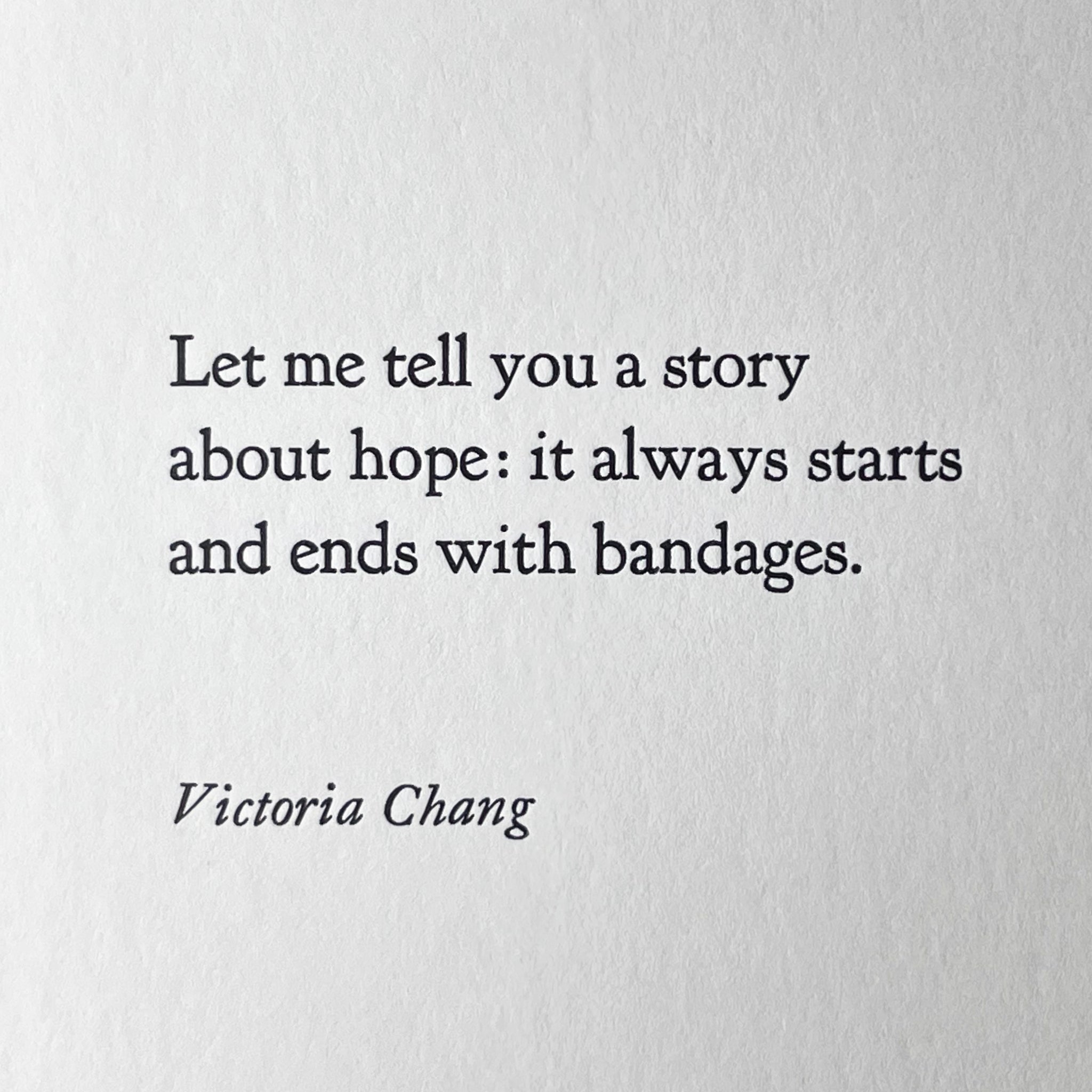How Poetry Broadsides Are Made at Expedition Press

Process overview
How do we do what we do? What makes our work go from inspiration to product? What does it take to make one of our poetry broadsides?
In this article, I’ll cover:
- Reading & text selection
- Permissions
- Design
- Printing
- Finishing
- Sharing!
Take an inside look with me into the press room of Expedition Press...

1. Reading & text selection
Words are central to my work as a letterpress artist and small press. Something always sparks an idea. Sometimes this starts with an original quote, sometimes a book, or sometimes it starts with me hearing the poem or meeting an author at a reading. Most often, I am working from a book, and usually from an author’s entire published works — the library is great for this as I only have so much shelf space! One of my consistent practices is that wherever the inspiration starts, I always buy the hard copy book I am working with. I read fast, and then I read slow, and I often set it aside for months and see what sticks with me; what surfaces when I pick it up again later. I know I’ve hit on a poem or part of a poem I want to print when it makes me feel something big and I can’t get it out of my head.
2. Permission
This is a big one. Getting permission is a critical part of the partnership it takes to print a poetry broadside. I wait to ask the publisher and poet for permission until I am quite sure I want to print the selected text, as it always feels like a big commitment. Usually at least six months, and often a year or two, transpire between when I find something I’d like to print and when I ask permission.
Permission asks vary depending on whether I know the poet and/or publisher, but I do have a standard agreement that includes a certain number of copies, fees to the publisher, honorariums to poets, and always complimentary copies for both. Bigger publishers have their own permission process, of course. In the end, it’s all relationship-based and this is what I actively prioritize. Even if someone says no, I still got to be in contact and express gratitude for the invaluable work they did — the writing, the bookmaking, etc.

3. Design
This always starts again with reading. I read and re-read the text a lot. By the time I get to the stone or the composing stick, I usually have a pretty good feel for where to start. I think of the text like a character in a book: what adjectives would describe it? What’s the feeling it gives me? Then, I pull type that aligns with those ideas. I will often pull the title in a handful of different faces and play around with them on the stone.
For body text, I always start with setting the longest line. Of course, sheet size is a major consideration, so before I pull type I’ve already decided whether this is going to be a broadside or a notecard. I pull proofs, cut and paste, and eventually land on something and settle into building a solid form.

4. Printing
This is where I get to be a press operator, and I love it. The world falls away to a few simple things I am trying to control — impression, inking, registration — and I hang out in a deep technical space making minute adjustments for hours on end.
In truth, the line between design and printing is blurred for me — even halfway through a press run I will stop and make a tiny change, typically a tiny spacing adjustment, just to see if it improves the overall design (that’s with new prints). If I’m printing more of something I’ve already designed (called a restrike), then I get to just be the printer and that is fun in a whole other way. I choose which press depending on format, quantity, and whether I am designing or just doing a restrike.
I feel a lot of pressure when designing that lets off some when I commit to printing and most of the decisions have already been made. Also, the process of printing is mesmerizing, and I feel so empowered and LOVE seeing so many copies of beautiful powerful words coming off the press.

5. Finishing
The final steps! This includes quality control, setting aside archive copies, sending comp copies, arranging for signing if needed, inventory count, product listing, packaging, etc. Some of this may not seem very exciting, but it’s when the piece I’ve thought about for so long, and put so many hours into printing, is finally ready to head out into the world, and that’s certainly exciting to me.

6. Sharing
The last step is sharing: writing the story, photographing the piece, telling people about it, selling, and shipping. In other words, sending it out into the world! You get to hold these pieces in your hand, read these words day after day, and in some small way, be changed by them. Over and over again — which never fails to leave me with joy and gratitude. You keep reading, and I'll keep the presses running!



